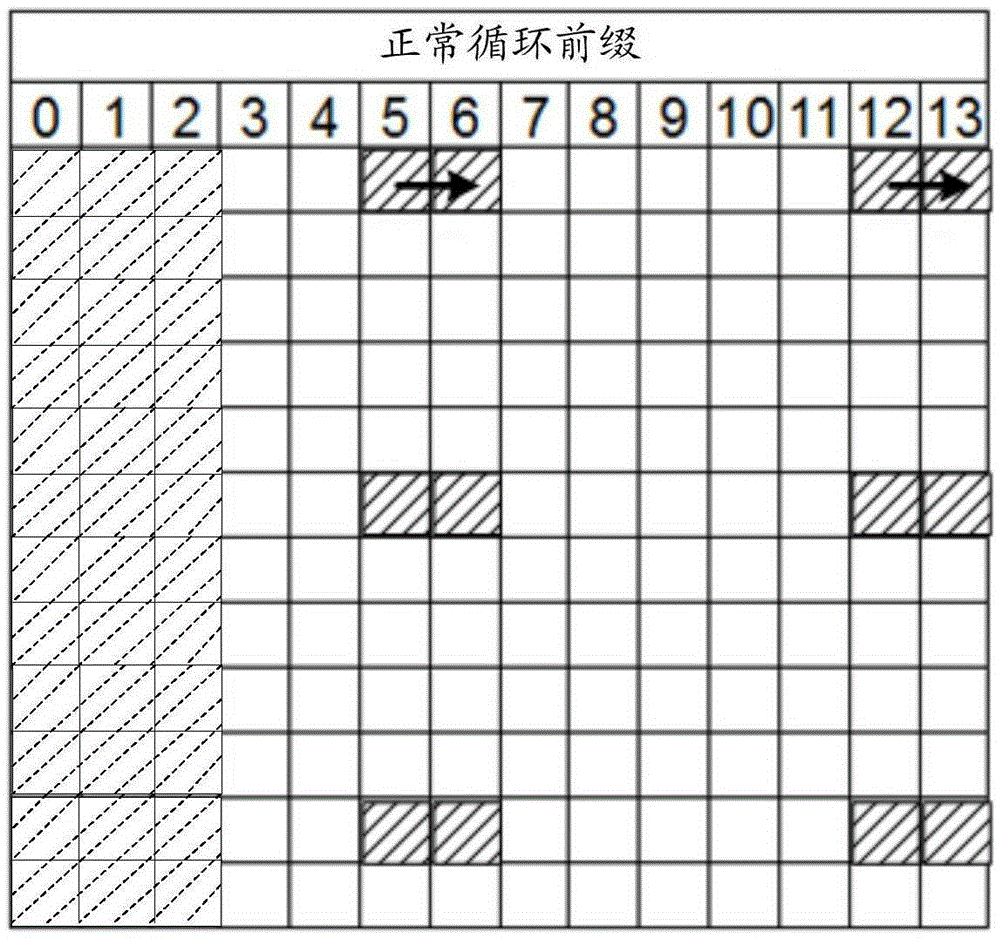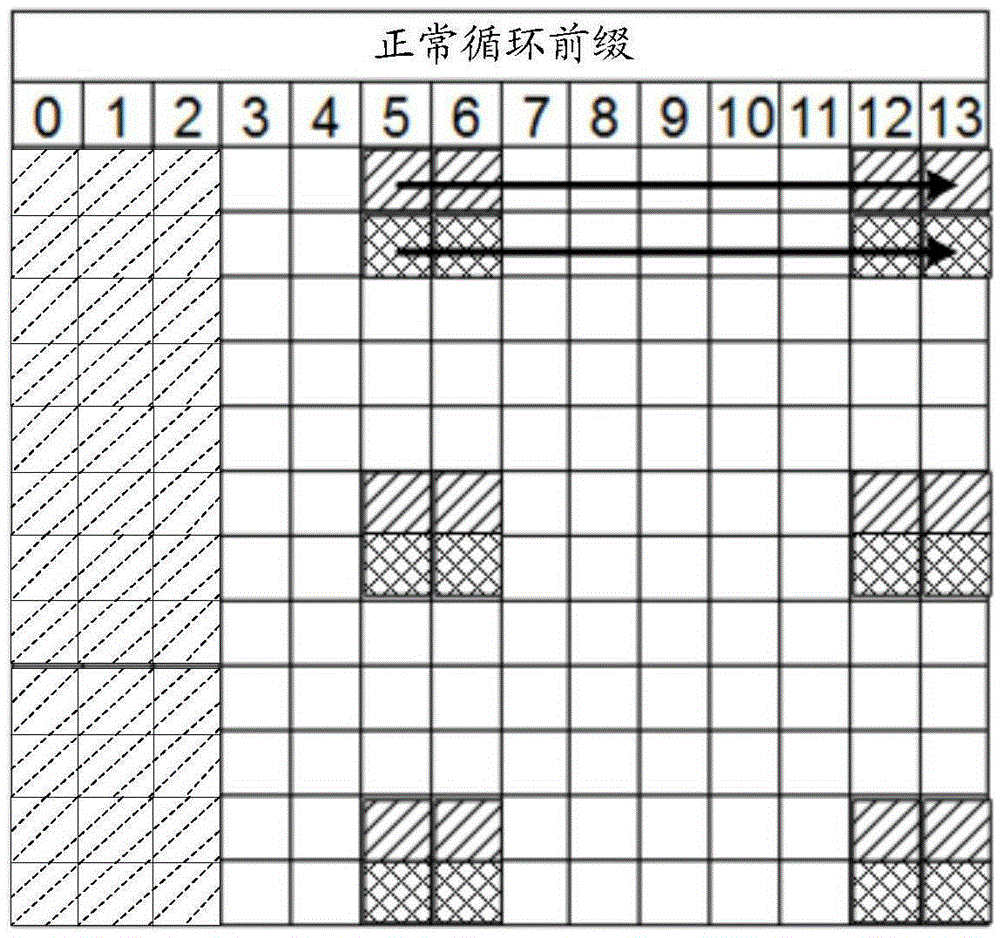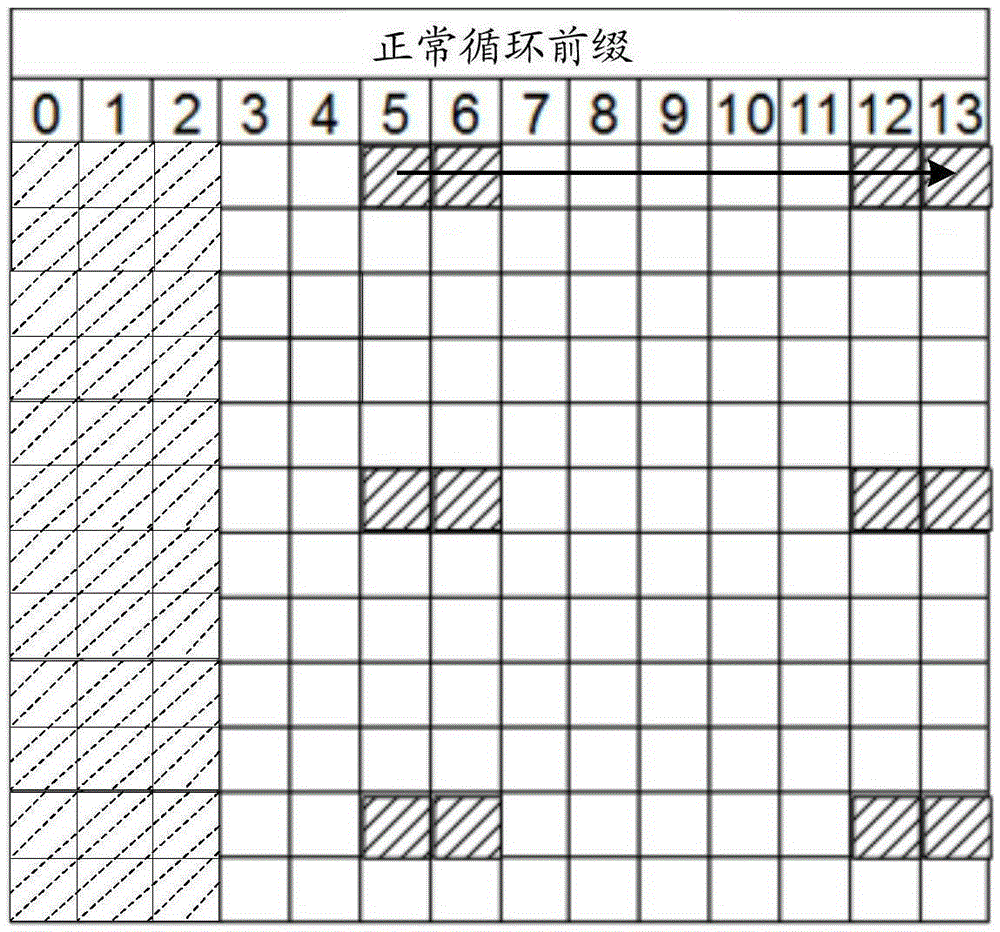Method and apparatus for sending demodulation reference signal, base station and terminal
A demodulation reference signal and terminal technology, which is applied in the field of sending demodulation reference signals, can solve the problems of power imbalance between OFDM symbols and the inability to meet the matching requirements, and achieve the effect of maintaining power balance and ensuring backward compatibility
- Summary
- Abstract
- Description
- Claims
- Application Information
AI Technical Summary
Problems solved by technology
Method used
Image
Examples
no. 1 example
[0090] Such as Figure 8 As shown, the first embodiment of the present invention provides a method for sending a demodulation reference signal, which is applied to a base station, and the method includes:
[0091] In step S801, the DMRS sent to the terminal through the demodulation reference signal port 7 and the DMRS port 8 is mapped using a first mapping order to obtain a first DMRS.
[0092] In the first embodiment of the present invention, the orthogonal mask sequence for mapping the DMRS sent to the terminal through the demodulation reference signal (DMRS) port 7 and DMRS port 8 is the same as that of the existing standard .
[0093] Step S802, performing mapping processing on the DMRS sent to the terminal through the DMRS port 11 and the DMRS port 13 using the second mapping order to obtain a second DMRS.
[0094] Wherein, the above-mentioned first mapping order is opposite to the second mapping order.
[0095] In the first embodiment of the present invention, the abo...
no. 2 example
[0122] Such as Figure 12 As shown, the second embodiment of the present invention provides a device for sending a demodulation reference signal, which is applied to a base station, and the device includes:
[0123] The first mapping module 1201 is configured to perform mapping processing on the DMRS sent to the terminal through the demodulation reference signal DMRS port 7 and DMRS port 8 using a first mapping order to obtain a first DMRS;
[0124] The second mapping module 1202 is configured to perform mapping processing on the DMRS sent to the terminal through the DMRS port 11 and the DMRS port 13 using a second mapping order to obtain a second DMRS; wherein, the first mapping order is opposite to the second mapping order;
[0125] The sending module 1203 is configured to send the first DMRS and / or the second DMRS to the terminal.
[0126] Among them, the device also includes:
[0127] The first acquiring module is configured to acquire a first orthogonal mask sequence fo...
no. 3 example
[0141] A third embodiment of the present invention provides a base station, including the above-mentioned device for sending a demodulation reference signal.
[0142] It should be noted that the base station provided by the third embodiment of the present invention is a base station including the above-mentioned device for sending a demodulation reference signal applied to a base station, that is, all embodiments of the above-mentioned device for sending a demodulation reference signal applied to a base station are applicable based on the base station, and can achieve the same or similar beneficial effects.
PUM
 Login to View More
Login to View More Abstract
Description
Claims
Application Information
 Login to View More
Login to View More - R&D
- Intellectual Property
- Life Sciences
- Materials
- Tech Scout
- Unparalleled Data Quality
- Higher Quality Content
- 60% Fewer Hallucinations
Browse by: Latest US Patents, China's latest patents, Technical Efficacy Thesaurus, Application Domain, Technology Topic, Popular Technical Reports.
© 2025 PatSnap. All rights reserved.Legal|Privacy policy|Modern Slavery Act Transparency Statement|Sitemap|About US| Contact US: help@patsnap.com



